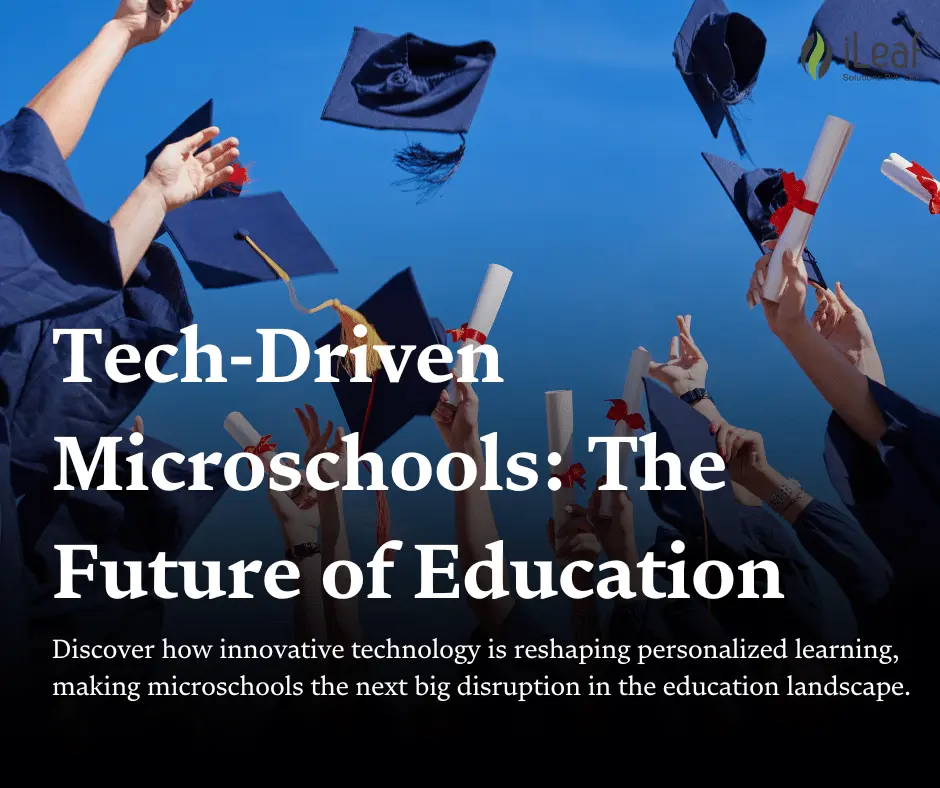The Rise of Tech-Driven Microschools: A New Era in Education

Table of Contents
- Understanding Microschools
- The Role of Technology in Microschools
- Benefits and Challenges of Tech-Driven Microschools
- Case Studies: Successful Tech-Driven Microschool Models
- The Future Landscape of Personalized Education with Tech-Driven Microschools
Understanding Microschools
Microschools are a relatively new model of education that deals with small, customized learning environments assigned to a very limited number of students. Instead of large, traditionally handled classrooms and standardized curricula, microschools offer something more on a personal, adapted level. They often have some specific focus on certain learning styles, interests, or academic needs.
The Role of Technology in Microschools
Technology plays a pivotal role in enabling microschools to deliver a personalized and effective learning experience.
Personalized Learning Platforms: These platforms allow students to progress at their own pace, accessing content and resources tailored to their individual needs.
Virtual Classrooms: Microschools can utilize virtual classrooms to connect students and teachers from different locations, expanding access to specialized instruction.
Adaptive Assessments: Technology-powered assessments can continuously evaluate student progress and adjust instruction accordingly, ensuring that students are challenged and supported at the right level.
Data Analytics: Microschools can use data analytics to track student performance, identify learning gaps, and inform instructional decisions.
Collaboration Tools: Online collaboration tools enable students and teachers to work together seamlessly, fostering teamwork and communication skills.
Benefits and Challenges of Tech-Driven Microschools
Tech-enabled microschools have certain advantages, including personalized learning, flexibility, innovation, and affordability. Because of the personalized attention to students, learning and teaching improve with increased academic achievement. Second, microschools can adopt various schedules and diverse learning options as required by their students. Technology also enables microschools to propose new teaching methods and ways of curricular design for innovative education. By implementing technology, microschools reduce overhead costs, which saves money, and make education accessible.
However, there are also challenges to consider:
Not all disadvantaged communities can equitably have access to technology. Teachers will need more training on how best to use this technology in the classrooms. A smaller class size could limit the opportunities of social interaction and peer learning. The microschool regulatory framework can be complex in countries that set a high bar for education standards.
Case Studies: Successful Tech-Driven Microschool Models
Several microschools have demonstrated the potential of technology-driven education. Here are a few examples:
AltSchool: This U.S.-based microschool chain uses a personalized learning platform and adaptive assessments to cater to each student's unique needs.
Khan Lab School: Founded by Sal Khan of Khan Academy, this school integrates Khan Academy's online resources with in-person instruction to provide a blended learning experience.
Summit Public Schools: These charter schools leverage technology to deliver personalized learning at scale, combining online coursework with in-person mentorship.
The Future Landscape of Personalized Education with Tech-Driven Microschools
In all, tech-driven microschools represent an inspiring new frontier in education. Using technology to provide personalized learning experiences for students can give them the needed skills and knowledge to be successful in the 21st century. Yet, as technology continues to grow, even more exciting and efficient models of microschools will be expected from innovation.
But success for microschools depends on a variety of factors. First, policymakers need to create environments where microschools will flourish. This means providing the resources and flexibility schools need to innovate. In addition, affordable and reliable technology must become ubiquitous so that all students can tap into this new paradigm in education.
Furthermore, the teachers' development and professional training also play a very vital role. The teacher will have to be adequately competent and knowledgeable in handling the modern technology inside the classroom and will have to adapt their instruction according to each student's needs.
This would be further driven with collaboration between schools, technology providers, and education experts. Jointly, the parties could develop a set of new tools, resources, and best practices that foster growth and development in tech-driven microschools.














